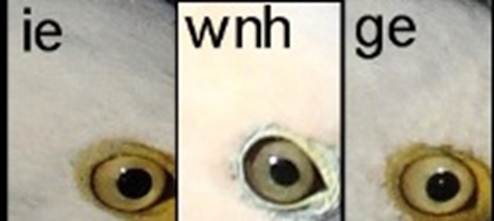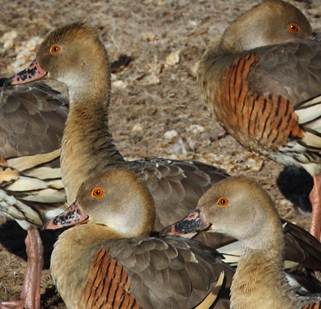Below is the third graphic again, followed by the answers.

1. Black-shouldered Kite
2. White-browed Scrubwren
3. W-w Chough
4. Lace Monitor/goanna (half point for any lizard)
5. Black Swan
6. Rainbow Lorikeet
7. B-f Monarch
8. White-necked/Pacific Heron
9. White-headed Pigeon
10. Plumed Whistling-Duck
11. House Sparrow
12. Rabbit (half point for any mammal)
Steve H took a rest from this one, with work and all. However Leo Berzins stepped in with an impressive eight and a half points (see his list at bottom). Leo missed the difficult 8 and 10. I wonder if any of you having a go at this in the privacy of your office, study or bedroom got those two.
While the intermediate and great egrets are very similar if you don’t go below the eye, the white-necked lacks any yellow. (Hadn’t noticed that before, but quite distinctive.)

Number 10 was a Plumed Whistling-Duck – in fact one of the flock of 28 that appeared in Dickson a few days ago. These ducks have bland, pale brown heads. They also have black mottling on their pink bills, like someone had done a poor job of chipping off old paintwork. Apparently this is normal for adults.

From: [
Sent: Wednesday, 26 October 2011 2:34 PM
To: Geoffrey Dabb
Subject: Final point of view
1 Black-shouldered Kite
2 White-browed Scrubwren
3 White-winged Chough
4 Shingleback
5 Spotless Crake
6 Rainbow Lorikeet
7 Black-faced Monarch
8 Intermediate Egret
9 White-headed Pigeon
10 Baillon's Crake
11 House Sparrow
12 European Rabbit

